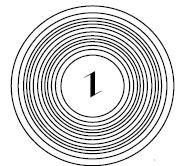The imagined past.
This is the photograph on the cover of The Significance of Monuments by Richard Bradley. It is an image of an Aberdeenshire stone circle and horizon. About 30 flash photograph sections with the camera on a pole, taken from the centre of the stone circle, from a height of 6.5 metres.
The usual introduction to prehistoric monuments is:
An image in a book
Photos that try to encapsulate the whole from the outside- usually from the air.
Diagrams:
That meander into simplicity and complexity.
The real experience is of a reconstruction
That references something...
The noise of the Heritage experience drowns out past and present...
Dislocating the orientation of self with the monument and the present moment.
Therefore I recommend The Significance of Monuments by Richard Bradley without any reservation to anyone who wants to follow the clues and to join the dots accurately.
I loved the insight this book provides.
Such as?
Such as the possibility that long barrows referenced abandoned houses.
The oldest long barrows often contain a single burial...
Now it is standard to say that long barrows represent collective burials and show that Neolithic farmers venerated their ancestors; that the Bronze Age round barrows with their single burial show change in religion through burial rituals...from collective to individual.
From lots of jumbled bones and no grave goods to single, crouched and whole skeletons, Beakers and copper daggers.
Obviously it isn't so clear cut.
Not all long barrows were open and collective
Most round barrows contain more than one person
Well anyway, abandoned houses.
As if when a family died, their home was abandoned and became a long mound
Because houses were long...
The shape of a long mound spoke of death.
I include this music here now, because it is what I'm listening to as I write...
And it speaks of an imagined future...
The perception of time is important.
I began reading Part Two of The Significance of Monuments this morning.
The subject was causeway enclosures.
And a suggestion that the circles represented the idea of a long gone, ideal village.
Basically people of the early farming communities in Britain were creating a lost world of an imagined past- even then.
The debris found at causeway enclosures lead to the suspicion that they were places where many people met to exchange goods, animals, arrange marriages and party hard. They were places where there was conflict. They were often at the edge, and on a hill. The space is wrapped around with trenches and fences and gates. The earth strewn with arrows. There are the skeletons of dead people whose end was far from peaceful.
But the idea that fascinated me is to ask how people recreate the past. The forces that lead to this are equally interesting, but for now it is simply the form new 'archaic' rituals take...that call me.
And why modern archaic doesn't need to be authentic to work.
A re-creation is less likely to hit the mark than ritual born from a flash of inspiration.
I realise now that I'd been thinking, heck, surely people 5,000 years ago knew what they were doing?
Possibly not.
i









